December 2015
Buying off plan
21/12/15 08:26 Filed in: Property

As Battersea Power Station advertises flats which will only be ready for occupation next autumn, is buying off plan a good idea?
Purchasers should be aware of the many dangers that buying off plan can present.Usually, the developer is unlikely to produce a detailed specification, yet this is vital for a buyer. Glossy sales brochures showing similar schemes completed by the developer may not accurately reflect the property that you are buying.
Detailed plans and a full specification are essential, listing precisely what is being built and the quality and extent of fixtures and finishes included in the price. Paying a deposit and agreeing a price up front can result in savings when house prices are rising as some developers will consider reductions on the full sale price to reflect they have a sale before the property is built.
However, where prices are falling, the buyer could be locked in to a contract that requires them to pay more for the property than it may be worth when completed. Agreeing a price in advance of the development being completed can result in purchasers accepting to pay more than the property is sensibly worth in the open market, simply for the prestige of being one of the first owners.
If other buyers cannot be found at those levels, subsequent prices for other properties in the development may expose those earliest sales as excessive when the remainder of the scheme comes to be sold.
Then there is the added risk of the developer running out of funds before the scheme is complete. A buyer can then be faced with a lengthy and expensive legal battle to see the development finished or to recover their deposit, which in some circumstances may simply not be worth the effort. This is a costly error to be avoided.
Grillo LLP are at www.grillollp.com and Tel: 01483 860 600
A Cinderella Story
16/12/15 14:55 Filed in: charity

Surrey Supporters Part of Conservation First
Supporters of Shalford-based wildlife charity, the David Shepherd Wildlife Foundation, have played a key part in a conservation first by helping to fund the rescue, rehabilitation and release of a rare Amur (also known as Siberian) tiger that has now become a mother.Orphaned in 2012, the then 5-month old tigress named Zolushka (Russian for Cinderella) was found malnourished and with severe frostbite. Her chances of survival looked slim.
“With as few as 450 Amur tigers left in the wild every tiger is vital to the continuation of this sub-species, the largest of all the big cats. And, although Zolushka’s chances of survival looked slim there was no way we were going to stand by and watch her die,” says Vicky Flynn who manages the charity’s TigerTime campaign.
Donations to support the tigers care came from across the world, through the David Shepherd Wildlife Foundation and a host of international NGOs. Gradually Zolushka gained strength; she was moved to a facility where she could be away from human contact and was taught vital hunting skills. By the spring of 2013 it was decided that she was ready for release back into the wild.
“This was a huge decision to make, the tiger has to be strong, able to hunt and retain a wariness of humans for releases back to the wild to work,” adds Vicky Flynn.
Zolushka was fitted with a satellite and radio collar and tracked by rangers and motion-sensing remote cameras and quickly began hunting badgers, wild boar and red deer. In January 2014, the camera’s also showed she had an admirer – a male Amur tiger.
“There aren’t many good news stories when you work to save wild tigers and when the latest news came through this week that Zolushka was the mother of two cubs we were ecstatic! All the hard work, all the cooperation and the funding had proved that wild tigers can successfully be re-introduced. For tiger lovers, it is one of the best Christmas presents we could imagine!”
It is believed to be the first time a released tiger has gone on to become a mother and raises hope for the survival of Amur tigers.
But Cinderella’s story doesn’t end here. She now has to protect and provide for her cubs through the sub-zero temperatures of a Russian winter.
“We have everything crossed for Zolushka. Now, more than ever, funding for our anti-poaching and park protection patrols in the Russian Far East are vital. They will protect not just Zolushka but other rare Amur tigers too,” adds Vicky.
The David Shepherd Wildlife Foundation has a long history of supporting Amur tigers and was part of an international coalition that worked to bring the species back from the brink of extinction in the 1990s when numbers crashed to around 100. Today, they continue to fund key tiger conservation projects in Russia, India and Thailand to protect wild tigers.
You can find out more and donate at www.davidshepherd.org or www.tigertime.info
Polesden Lacey opens servants’ quarters to the public for the first time
16/12/15 12:50 Filed in: What's On

For the first time since being acquired by the National Trust in 1942, Polesden Lacey has opened up sections of the servants’ quarters as part of their 1930s Christmas event.
Until now, a visit to Polesden Lacey would involve exploring the opulent Edwardians rooms designed by Mewes and Davis, who also designed the Ritz, and used by Margaret Greville to entertain politicians, top authors and royalty. Now visitors can also get an insight into the real lives of the men and women who worked tirelessly behind the scenes to ensure that Mrs Greville’s guests had an unforgettable luxury experience at Polesden Lacey.After enjoying the splendour of the dining room, dressed with lilies and roses, feathers and pearls, or the dazzling gold room leafed in 24 carat gold, visitors can explore the quiet spaces the guests would never see.
In the linen room, the best fresh white linen is ironed and stacked in the cupboard ready for tables throughout the house. Handmade paper streamers in bright colours adorn the back corridor where the servants would hold their own Christmas celebrations when all their duties were finally done.
In a small housemaids’ room the Welsh lilt of Florence Dicker can be heard describing what it was like preparing for Christmas parties at Polesden Lacey during the 1930s and receiving small gifts from Mrs Greville herself. Finally, visitors step into the severy where the smells of cinnamon and nutmeg hang in the air; this is where wine was decanted and food was kept warm before it was whisked into the dining room next door.
This year, Christmas at Polesden Lacey is a sensory extravaganza. 1930s music plays in and around the house putting a swing in one’s step, soundscapes throughout the rooms bring the house alive as if they parties never stopped, aromas immediately evoke memories of Christmas gone by, and everywhere fresh foliage, flowers and Christmas trees glint and sparkle.
However, while the life of the party might have taken place around the piano in the gold room, the most interesting stories are those brought to life in the servants quarters. Stories of the men and women who woke unthinkably early to make and serve breakfast, light fires or polish shoes, and who retired late at night after the last of the champagne was long gone.
Christmas opening times, tours and admission prices: For the first time ever the house will be open every day from 11 am on Friday 4 until Wednesday 23 December. Non-member pay standard gardens admission plus adults £4, children £2, and families £10 with a free glass of mulled wine or soft drink with ticket. Members must also pay the additional Christmas event charge. Tours: Available weekdays only from 11am-12.30pm (book on arrival) followed by free flow exploration in the afternoon and at weekends until 4pm. Last entry to the house is 3.30pm. Entry to the house is not possible without gardens admission. Please note, for conservation reasons only parts of the house are open.
Go behind the scenes at Glyndebourne this autumn
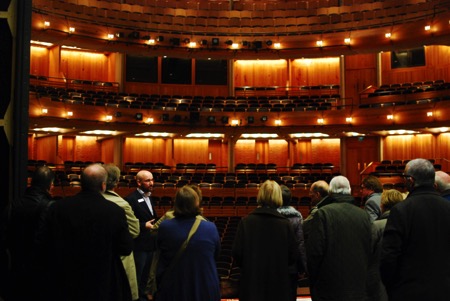
Tread the stage and go behind the scenes at Glyndebourne
This autumn Glyndebourne is offering an expanded programme of backstage tours to give an insight into the history and workings of its internationally-famous opera house.The tour takes in the theatre, including a chance to tread the Glyndebourne stage which has played host to opera stars including Dame Kiri Te Kanawa, Alfie Boe and Danielle de Niese. It also visits the backstage area, dressing rooms, rehearsal spaces and the historic Organ Room, where the very first musical performances at Glyndebourne took place in the 1930s.
During the tour, visitors will be given a brief history of Glyndebourne, learn about what’s involved in staging an opera and hear anecdotes of singers forgetting their lines, and an occasion when the cast of extras for one production included a number of live chickens.
Glyndebourne launched backstage tours for individuals in the autumn of 2012 and has increased the number on offer this year. The half-day tours until 16 December. Morning visits start at 10.15am and afternoon tours start at 2pm. To book visit glyndebourne.com
John and his opera singer wife, Audrey Mildmay, founded the Glyndebourne Festival in 1934. In 1968 the Glyndebourne Tour was established to bring opera to new audiences across the country and create opportunities for talented young singers.
Today Glyndebourne is a twelve month operation. The Festival runs from May to August with a programme of six operas in a 1,200-seat opera house. The annual Tour takes place from October to December and a widely respected education programme is active year round staging new work and delivering projects to enhance the understanding and enjoyment of opera.
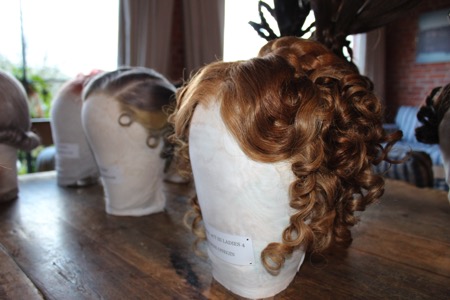
Together the Festival and Tour present 120 performances annually to an audience of 150,000 with many more people experiencing Glyndebourne’s work through its yearly programme of cinema screenings and free online streamings. Glyndebourne has pioneered specialist recordings to share its work with a global audience through these channels and as part of this mission to reach new audiences, also offers
reduced-price tickets to under-30s.
Since its founding, Glyndebourne has remained financially independent and, whilst receiving valued Arts Council support for the Tour and education work, the Festival receives no public subsidy. As a registered charity, our work is funded by Box Office income, our Members and supporters.
Paintings by Victor Edelstein
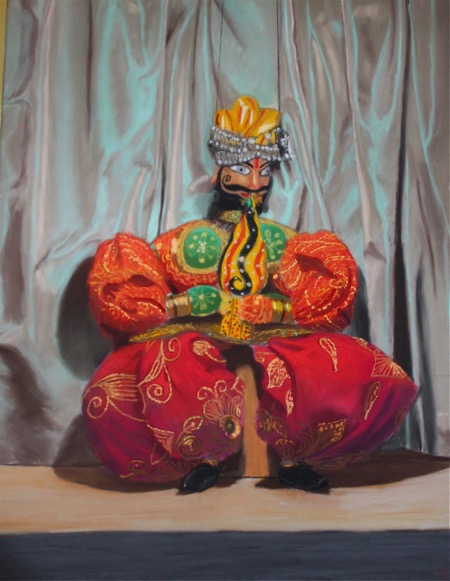
Exhibition December 1-24 2015
Victor Edelstein’s clients included Diana, Princess of Wales, for whom he made the famous dress in which she danced with John Travolta at the White House. He had worked for Biba and Christian Dior in London before starting his own workshop.But 22 years ago he chose art over dress designing and from December 1-24 he has an exhibition of his work and that of Annamaria Succi, his wife, at the Indar Pasricha Gallery at 22 Connaught Street, London, just behind Marble Arch. The works make for perfect Christmas gifts.
And in the voluptuous swags of textiles, curtains, wall hangings, cushions and the drama of theatre curtains Victor Edelstein shows that he has lost none of his skill and mastery of the cut and hang of luxurious materials made manifest in his pictures where they too dance, though not now for John Travolta, but for a select group of cognoscenti who understand grace.
Pictures by Victor Edelstein and Annamaria Succi lift the spirit with their lively colours and exotic light. Both painters have been inspired by India and their fascination with the country, it’s people, the wonderful palaces, abundant flowers, plants and animals is reflected in their work.
Anyone lucky enough to find one of these paintings among their Christmas presents, will know that the giver wanted them to have enjoyment from the gift for ever.
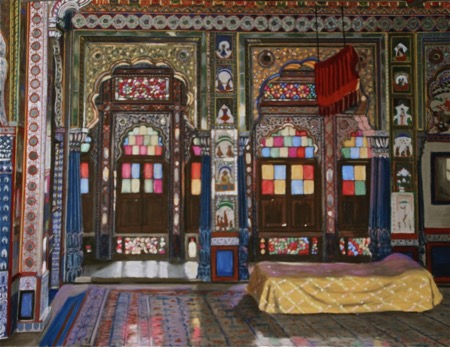
Michael Strauss, former Head of Impressionist Pictures at Sotheby’s, says: “I have long been an admirer of Victor Edelstein’s pastel. He has a special touch with that softest of mediums which create exquisite luminous effects. By such means he has interpreted light and its play on surfaces in his unique fashion.”
Victor’s recent show at the Didier Aaron Gallery in Paris, ‘Palace Interiors in Pastel’ created an unusual reaction – “an almost greedy feasting on the images by viewers,” according to French arts writer Sylvie Tolila – “and a sea of red sold dots.”
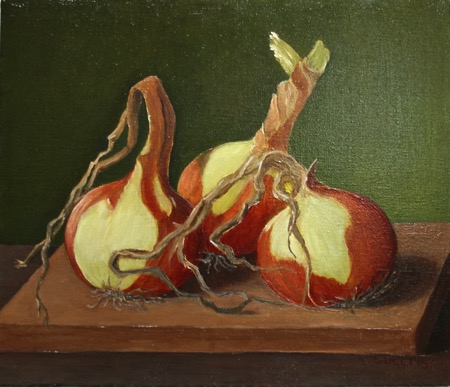
Victor explains his motivation for the paintings. "The challenge is to enter a room and try to find ‘The-Picture-That-Might-Be-There’. I like to find interiors that have not been touched for many years, which is why I have tended to concentrate on the interiors of palaces. For me there is an irresistible fascination in discovering in these largely unchanged interiors a true sense of the past.”
He studied painting with David Cranswick in London and Charles Cecil in Florence and held a first solo exhibition at Sotheby’s showing oils and pastels of Still Life, landscapes and portraits. The show sold out. Since then he has exhibited interiors from Venice and India at Hopkins, Thomas, Custot in Paris and at both Hazlitt, Gooden & Fox and Derek John’s Gallery in London. In New York his pastels were well received at Didier Aaron.
Annamaria Succi creates her own gems, having spent her life looking closely at beautiful objects. This intense concentration shows in her wonderful still life paintings and pastels. One will never look at a cabbage in quite the same way after seeing the ballgown she captures in this homely vegetable, nor the radiance of a quince, or a lemon. The Dutch Old Masters would recognize a fellow spirit in Annamaria.
She started her art career at Sotheby’s in 1969 in the publishing department, then became the editor of the Year Book, 'Art at Auction' and in 1974 went on to manage and do the buying for the British Rail Pension Fund Art Collection – one of the few art funds ever to have made a profit. In 1981 she went on to become an art investment adviser and dealer in old master drawings. Finally in 1995 she concentrated all her time on her own painting.
Today she has a strong following in Europe and the USA. Anne Heseltine says of her work: “Small in size they shine like little jewels and glow against the dark paneling of my old house. The eye does not become accustomed to them and so tire, but there is always something new to see in them. They give me infinite pleasure.”
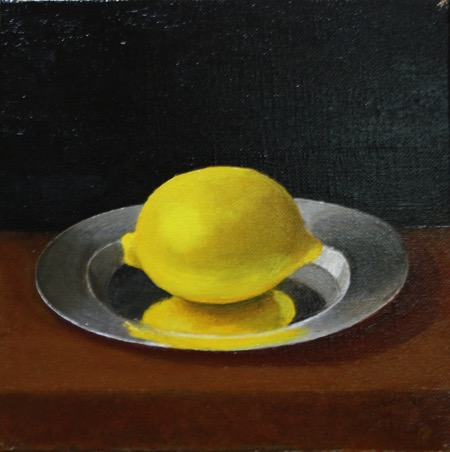
The Venetian professor of art, Ileana Chiappini di Sorio adds: “Annamaria revisits a classical genre in her work with a very personal viewpoint. Her pictures are a pretext to enhance natural forms as revealed by light….capturing the evanescent character of her subjects with true and delicate rendering.” In fact many of her works seem to glow with an inner light and life of their own.
Indar Pasricha says of these two remarkable artists: “I’ve always seen my role as creating bridges between Britain and India and in the work of these two artists that ambition is realized. Victor’s Indian and other interiors are all about light – the intense coloured light of India and the subdued moody light of England. Annamaria’s work reminds me of the Indian miniature, capturing in gem-like tones images that stay fresh and vital.”
For more information please contact Julian Roup on 01892 669200 or 07970 563958 or email info@bendigopr.co.uk